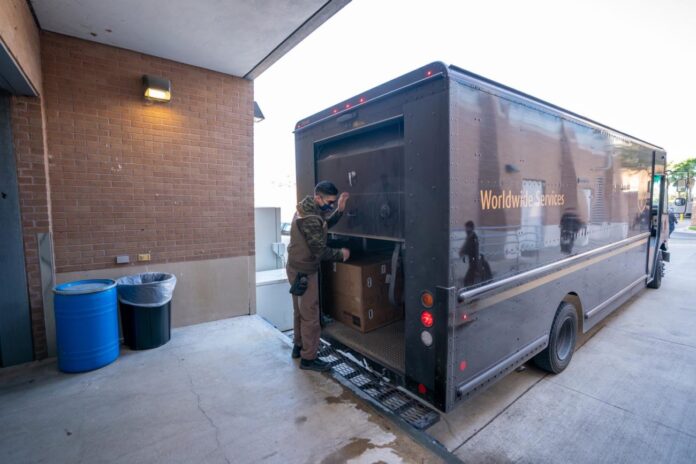The first doses of the first COVID-19 vaccine approved for emergency distribution by the Food and Drug Administration have arrived in the Rio Grande Valley and are going first to the health care providers on the front lines of the pandemic.
Dr. John Krouse, dean of the University of Texas Rio Grande Valley School of Medicine, said in a Tuesday press conference via Zoom that UTRGV received 1,950 doses of the Pfizer-BioNTech vaccine that morning and was set to start administering them that afternoon.
In accordance with FDA guidelines, the first round will go to front-line UTRGV hospital personnel — staff, faculty, physicians and nurses — who are exposed to the virus on a daily basis and who want to receive the vaccination, he said.
“In addition we have almost 300 residents and fellows who work in the hospitals across the Valley and who take care of patients with COVID every day,” Krouse said. “Those individuals will be getting the vaccine here in this first round as well, as they are key healthcare providers in the Valley workforce. Likewise, we have students in the university who take care of patients with COVID, and without those students being able to pitch in and help take care of those patients it would be much more challenging, given the fact that workforce can be very restricted in a time of crisis such as this.”
The plan was to vaccinate 400 to 500 people a day each day over the next four days, he said, describing it as a “massive undertaking.”
“It’s a very exciting time,” Krouse said. “It’s really thrilling to think that we’re finally able to begin to see the light at the end of the tunnel by being able to receive vaccine and now start to distribute that in an orderly fashion.”
The second dose of the two-dose vaccine will be administered the first week of January, he said, adding that the university’s role in vaccinating the general public is likely to grow steadily “until we can get a significant portion of the community vaccinated.”
Krouse said it will be the “better part of a year” before the vaccine is widely available to the general public, and that it’s important to remain patient and continue taking precautions against the virus, which means continuing to wear facial coverings in public, practice social distancing, avoid crowds and wash hands frequently.
“It’s important to know that the vaccine will be distributed in an equitable manner based upon state and federal guidelines,” he said.

UTRGV Photo by David Pike
Krouse said that despite rumors to the contrary it is physically impossible to contract COVID-19 from the vaccine, though some people who receive it may feel normal after effects such as fatigue or temporary soreness of the arm.
In Cameron County so far, only Valley Baptist Medical Center has received doses —2,925 to be divided among healthcare providers at the Brownsville and Harlingen VBMC campuses. VBMC spokesman Matt Lynch said there are enough doses in this first round for all VBMC personnel who elect to receive the vaccine.
Esmeralda Guajardo, Cameron County Public Health administrator said providers who want to be able to administer the vaccine must enroll with the state and that her department is encouraging providers — doctors office, clinics, labs, pharmacies — to do so. How the initial doses are allocated in Texas is decided by the FDA and the state COVID-19 Expert Vaccine Allocation Panel, which makes recommendations to Health Commissioner Dr. John Hellerstedt, she said.
“Cameron County, at the local level, we don’t have any control over who’s going to get it at this point,” Guajardo said.
However, the county will eventually play a role in getting the public vaccinated, she said.
“Cameron County Public Health, because we recognize we are the safety net for people that don’t have insurance, or don’t have a medical provider, or they’re unaccounted for, then our plans are to vaccinate the community once that vaccine is available to us,” Guajardo said.
Also high on the priority list for early vaccinations are nursing home residents and staff, she said. Guajardo said that according to the state sufficient vaccine for the entire population won’t be available before July.
When it gets here, she’s not expecting the kind of opposition to the vaccine manifesting itself in certain pockets of the country, she said.
“Honestly, I really don’t think so,” Guajardo said. “I’m going based on our historical vaccination rates. People generally tend to heed the advice of medical providers. … Going back to the vaccines for children program, we have pretty good vaccination rates in the Valley compared to other parts of the state.”





